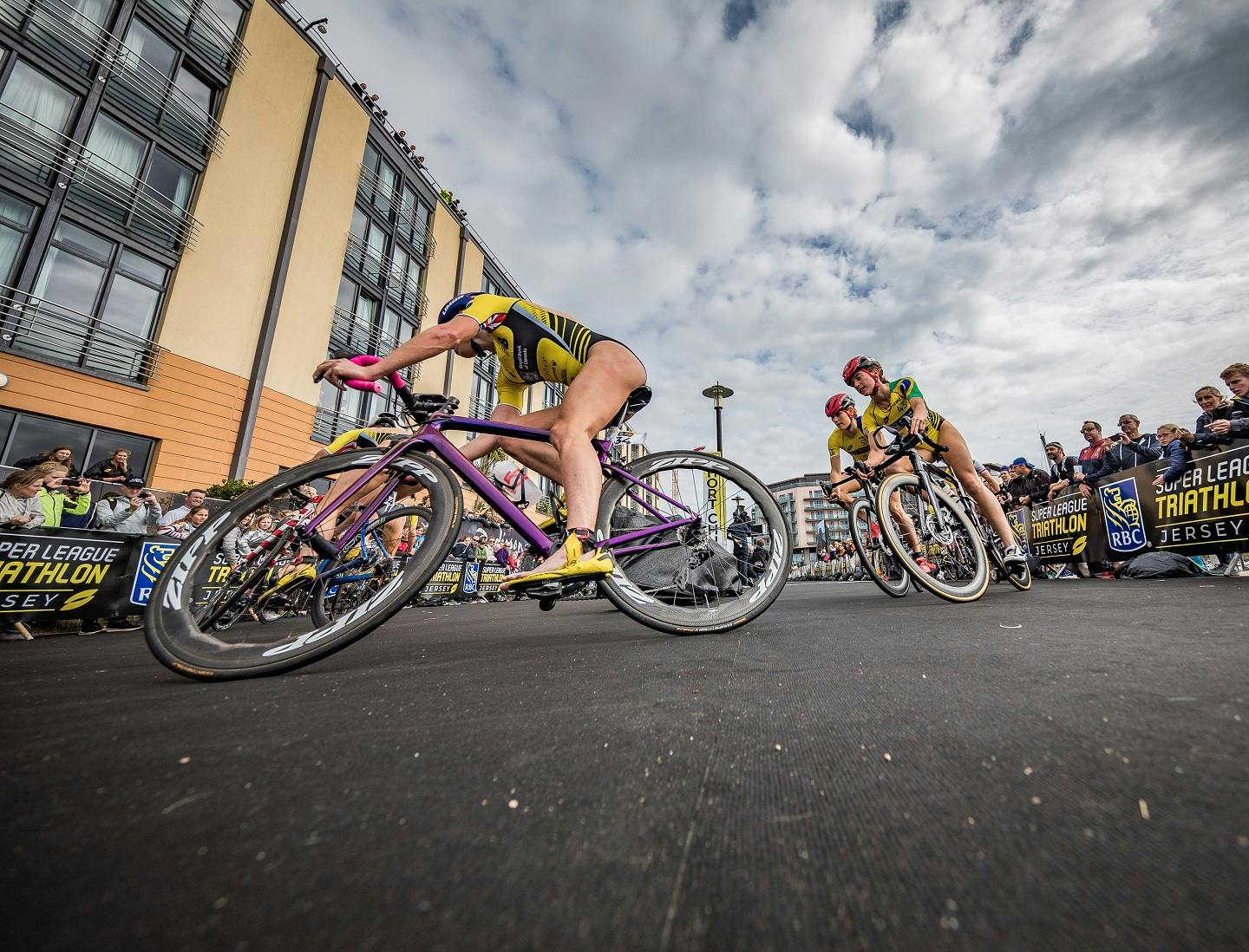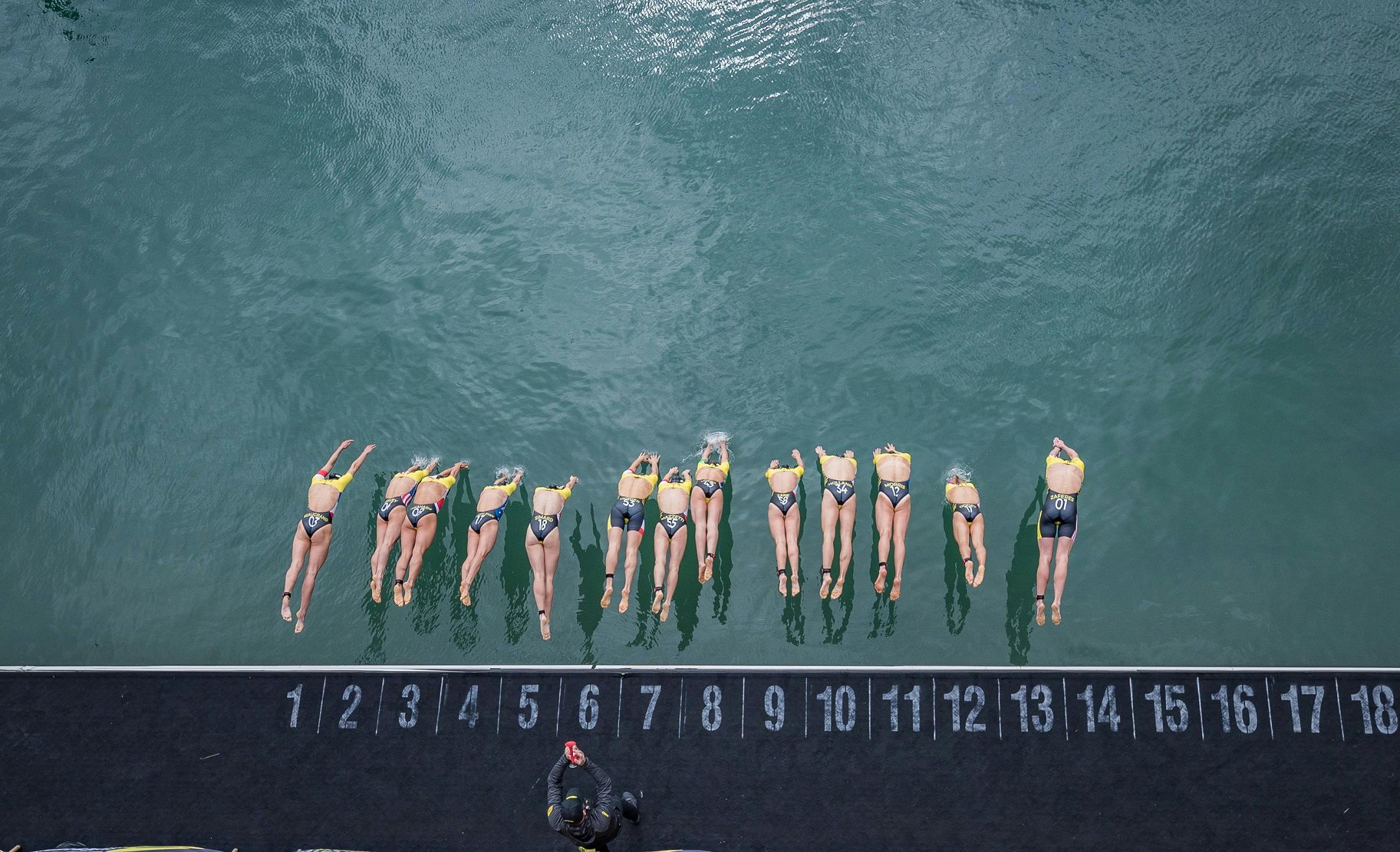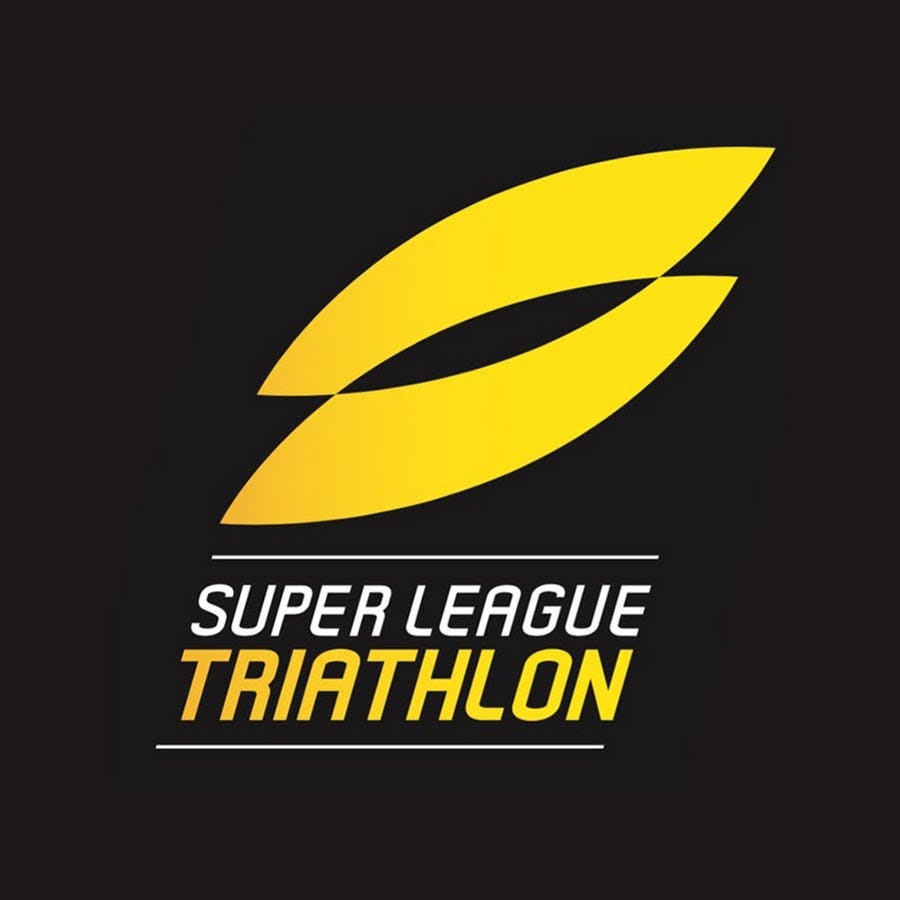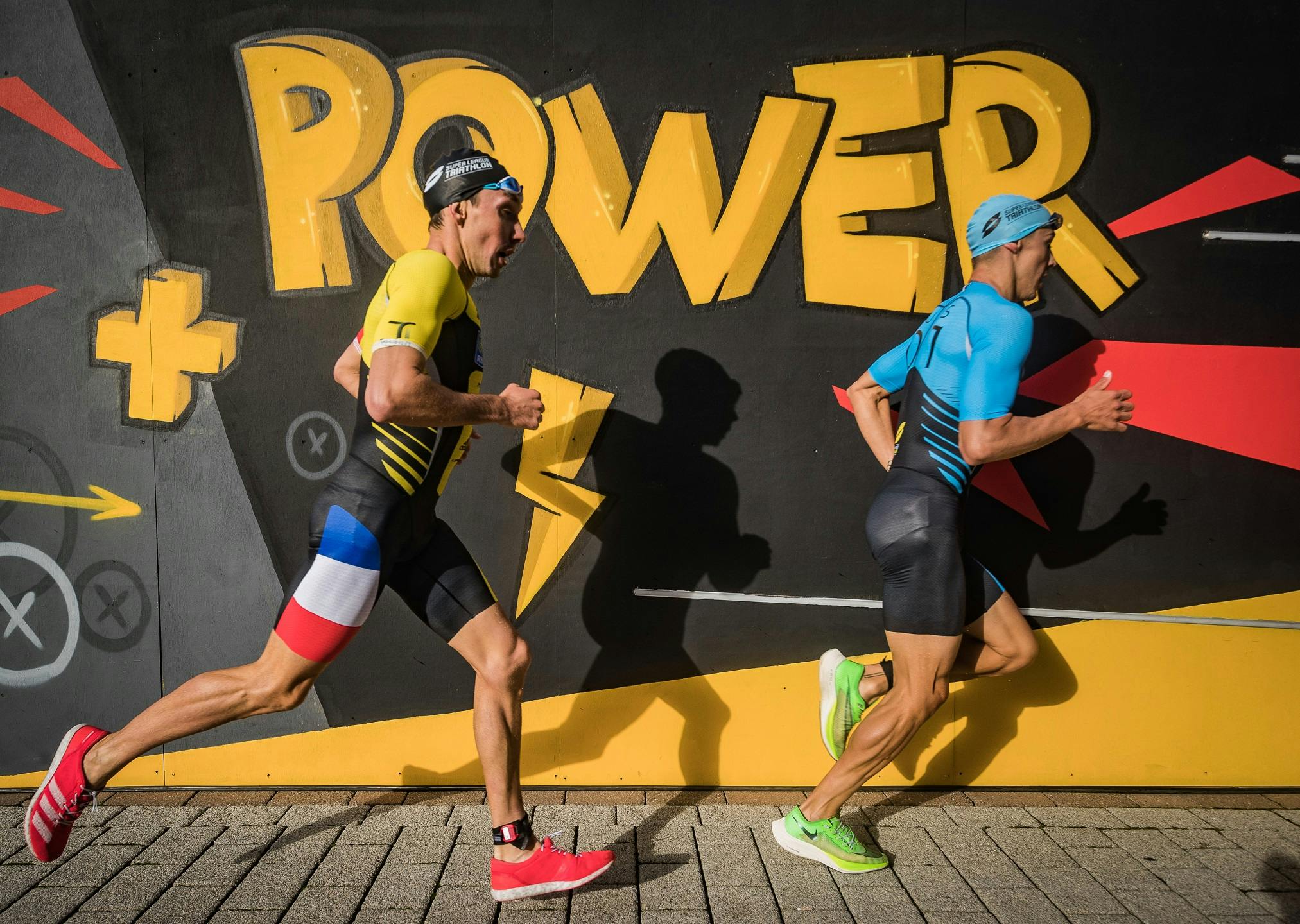Super League Triathlon (SLT) launched in 2017 with the goal of creating an entertainment property to elevate the growing sport into the mainstream consciousness.
Two years on there is little doubt that SLT has already done that, establishing the series as the pinnacle of triathlon on the world stage.
SLT has delivered game-changing race formats – mixing up long and short-course athletes – in a series of fast-paced events with unpredictable outcomes that culminate in the crowning of the best and most versatile male and female triathletes in the world.

“When Super League first started it was a case of testing whether this new and unique concept in triathlon would work, both practically and in terms of the appetite for it,” SLT’s chief executive and co-founder, Michael D’hulst, says.
“That meant searching for venues who were willing to allow us to test our concept and showcase it to the world. We believed in it and happily the demand for Super League racing was huge.
“That has meant our hosting strategy has quickly evolved to finding places whose DNA aligns perfectly with ours and where both Super League and the venue can flourish. We have been growing quickly ever since 2017 and are now scaling up for what will be our biggest season yet.”

Expanded schedule
SLT recently confirmed plans for a new and expanded Championship Series for 2019-20. The campaign kicked off with events in Jersey and Malta in September and October, respectively, before pausing to allow athletes to concentrate on the Tokyo 2020 Olympic Games, with a further five races set to take place in 2020. In addition, there will also be a raft of new qualifier races in the first half of next year.
“The Olympics takes place next year which is obviously very important for our athletes and will also grow further interest in triathlon so we have decided to take this opportunity to rapidly expand,” D’hulst adds. “Between now and the resumption of the Championship Series we also have a host of qualifiers around the world and we are aiming to expand further in 2021 and beyond.”
SLT’s strategy of attempting to arrange its calendar 12 months in advance is helping to establish long-term targets whilst enabling quick expansion of the schedule.
A variety of factors are currently under consideration in relation to the 2021 calendar, with the formal selection decisions set to be made in the summer of 2020.
“Obviously, we must be mindful that we look after the athletes and their movements around the world,” says D’hulst, before elaborating on the selection process. “It typically all starts with an expression of interest from a host city and then we have a conversation as to how we make that work and to ensure we have exclusivity around venues so each has a major impact.
“We do have numbers in mind [for the 2021 calendar] but for us it is more important that we grow in the correct way, and that means getting the right host cities. At this stage getting the right hosts are more important than the number.”
Hosting value
The value of SLT events to host cities has already been clearly illustrated. The series brings with it the best professional athletes in the world, youth participants and juniors, as well as fans and amateur athletes who compete in age group races, providing a clear tourism boost. Additionally, a Fanzone pops up at each event site to bring together families, community vendors and local vendors, to heighten fan engagement.
In Jersey, surveys carried out after this year’s event indicated that the awareness generated by SLT had the potential to generate 2.7 million new tourists from their key target markets in France and the UK, while four in five local residents felt that the event had a positive impact on their community – much higher than other sporting events.
Local triathlon club membership numbers are also soaring in Jersey. Age-group participation has grown by 141 per cent and more than one per cent of the entire population signed up for the RBC Race for the Kids fun run to raise money for charity. Further afield, SLT has a worldwide global broadcast reach of 1.6 billion and the Jersey event enjoyed a social media reach of 22 million over the race week. However, the impact is also long-lasting, with SLT working closely with multiple departments and agencies in each host destination with a focus on delivering a return on investment against set KPIs.
 “Super League offers a whole package that is just unbeatable with our TV and social media reach and engagement, demographics and our outreach and community programmes,” D’hulst says. “We are not a brand who just turn up for one weekend a year and then leave and forget about it. We work to benefit everybody.
“Super League offers a whole package that is just unbeatable with our TV and social media reach and engagement, demographics and our outreach and community programmes,” D’hulst says. “We are not a brand who just turn up for one weekend a year and then leave and forget about it. We work to benefit everybody.
“We spend a long time planning and organising all manner of community engagement activities, from encouraging local vendors to share in the success to giving dance troops the chance to perform in front of a big crowd.
“But probably the headline impact is from the legacy the professionals leave behind them.
We bring the best professional athletes in the world, and they are truly inspiring. We go to schools, businesses, community clubs, sports clubs – anywhere we are wanted and can have a positive impact.”
‘Wow factor’
In seeking host city partners, SLT looks for destinations that share the spirit of innovation and the vision of the series’ organisers for encouraging healthy living amongst the public, as well as sustainability.
“That cultural fit is very important. We also want unique destinations that have a ‘wow factor’ on TV,” D’hulst says.
“The great thing about Super League is that we cause very little disruption to a host city. Our races consist of short and sharp formats where the crowd sees lots of action at very close quarters.
“This all means we only need an 800-metre loop in order to host an event and so we won’t be disruptive or cause lots of road closures and this sets us apart, along with our cultural integration and outreach programmes which are an intrinsic part of our value proposition.”
Most importantly, at the heart of SLT’s relationship with host destinations is engagement and alignment with the city’s interests, as well as a commitment to “flip on its head” the traditional format of a triathlon event.
“Our community engagement programme is key, as is our global TV and social media reach, which is the biggest in endurance sport, and another important factor is that we don’t shut down a huge area for a weekend as our races require such a tiny footprint,” D’hulst adds.
“The number of spectators is always a multiple of the racers and we build stadium like courses so everybody is close to the action. We are a very dynamic and unique offering and the fact we can package our races into much shorter and more watchable formats means we are growing rapidly with a younger audience who traditionally have not been engaged in the sport.
“We will utilise local organisers, experts, agencies and businesses to assist us along the way to make sure we are getting the right advice and also putting money back into the local economy and we very much view the whole thing as a partnership on every level, whether that be operations or marketing or anything else. For us, co-operation is the key to successful events.”
